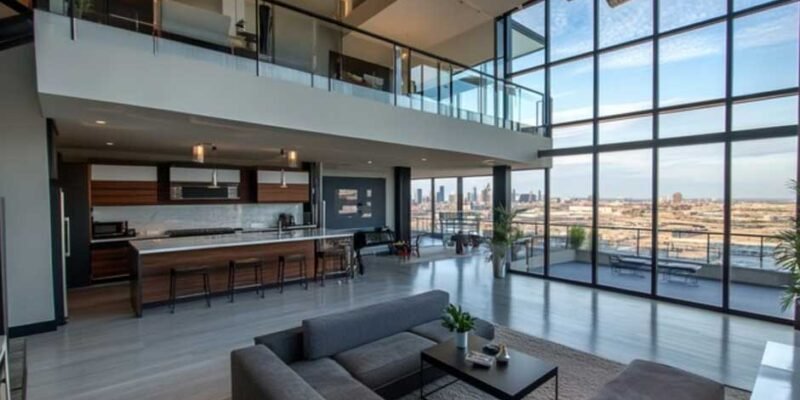
Innovative Solutions for Comfortable Multi-Story Living
Navigating the challenges of multi-story living often requires thoughtful design and innovative solutions. For homeowners, caregivers, and real estate investors alike, maximizing comfort and accessibility within multi-story homes has become a key priority in modern housing. From designing inclusive spaces for elderly family members to ensuring your property appeals to a broader demographic, there are creative approaches that cater to these needs without compromising style or functionality.
This article explores practical ways to create comfortable and accessible multi-story homes, focusing on forward-thinking designs, assistive technology, and architectural ingenuity.
Making Accessibility a Priority
One of the most significant challenges of multi-story living is ensuring all levels of a home remain accessible for everyone, regardless of mobility. The focus on universal design—a concept that creates spaces usable by people of all abilities—has become increasingly relevant. Here are some key elements of universal design that can make a difference:
1. Include Stair-free Options
Stairways, while common in most multi-story homes, can pose barriers for elderly residents or those with limited mobility. Solutions like installing ramps or gentle inclines can provide an alternative for easier movement between levels.
However, for a more modern and long-term solution, consider incorporating a residential elevator. For example, adding an elevator for homes Boise, ID ensures seamless and elegant access to all floors. This upgrade not only increases convenience but also boosts property value, making it an attractive investment for homeowners and real estate investors alike.
2. Widen Doorways and Hallways
For homes intended to accommodate wheelchairs, walkers, or mobility aids, wider doorways and halls are essential. A minimum of 36 inches is usually recommended to ensure smooth passage and comfort for all residents.
3. Level Flooring
Uneven floors and thresholds can become tripping hazards. One effective solution is to opt for flush finishes where floors transition from one material to another, maintaining consistency without creating physical barriers.
4. Automation Technology
Smart home technologies can bridge accessibility gaps. Automated lighting, voice-command temperature controls, and app-based home-monitoring systems improve safety and convenience for multi-story homeowners who want to minimize potential challenges.
Comfort Meets Functionality
Balancing aesthetics and functionality is key when designing a multi-story home. Practical modifications can stay stylish while significantly improving quality of life.
1. Thoughtful Room Placement
Designing a multi-story home with functionality in mind includes locating essential rooms, such as bedrooms or bathrooms, on the ground floor. This ensures convenient access even if someone has difficulty climbing stairs temporarily or long-term.
2. Optimize Natural Light
Ample lighting improves visibility and enhances living spaces. Windows on multiple floors strategically placed to allow natural light into staircases and common areas make the home feel brighter and more inviting.
3. Enhanced Storage Options
Multi-story homes often come with an abundance of vertical space, providing opportunities for enhanced storage solutions. Opt for built-in cabinets, under-stair storage, or hydraulic racks to make the most of multi-level designs.
4. Space-efficient Heating and Cooling
Comfortable multi-story living also depends on a home’s ability to maintain consistent temperatures. Smart thermostats and HVAC systems with zoning features ensure each floor maintains an optimal temperature, saving energy and increasing comfort.
Benefiting the Homeowner and Beyond
For real estate investors and property developers, creating homes that cater to evolving needs leads to notable advantages:
1. Expanded Market Appeal
Features like elevators and universal design significantly broaden a home’s market appeal, particularly among aging homeowners or buyers seeking luxury amenities. Accessibility is increasingly seen as a premium feature in modern real estate.
2. Improved Resale Value
Technological and design-forward additions that prioritize accessibility can also boost resale prices. Buyers are more willing to invest in properties designed with future-proofing in mind—elements that allow occupants to age comfortably in place.
3. Long-term Savings
Implementing technology like energy-efficient systems, coupled with upgrades that reduce repair needs (e.g., replacing stairs with elevators), ensures homes are more cost-effective over the long term.
4. Building Inclusive Communities
Real estate investors can play a pivotal role in creating inclusive communities. By applying these concepts across multiple properties, they signal to potential buyers and renters a consideration for diversity and growing needs.
Designs for the Future of Living
The drive toward comfortable multi-story living reflects broader trends in aging populations, diversified households, and the integration of advanced technology within residential design. The solutions covered above—universal design features, residential elevators, and smart home automation—pave the way toward homes that serve all residents more effectively.
Whether you’re designing a multi-level property for family use or as part of an investment strategy, forward-thinking solutions like accessible layouts, modern technologies, and sustainability ensure long-term satisfaction and value. Accessible homes aren’t just a convenience—they represent the evolution of housing toward inclusivity, function, and modern aesthetics designed for every stage of life.






